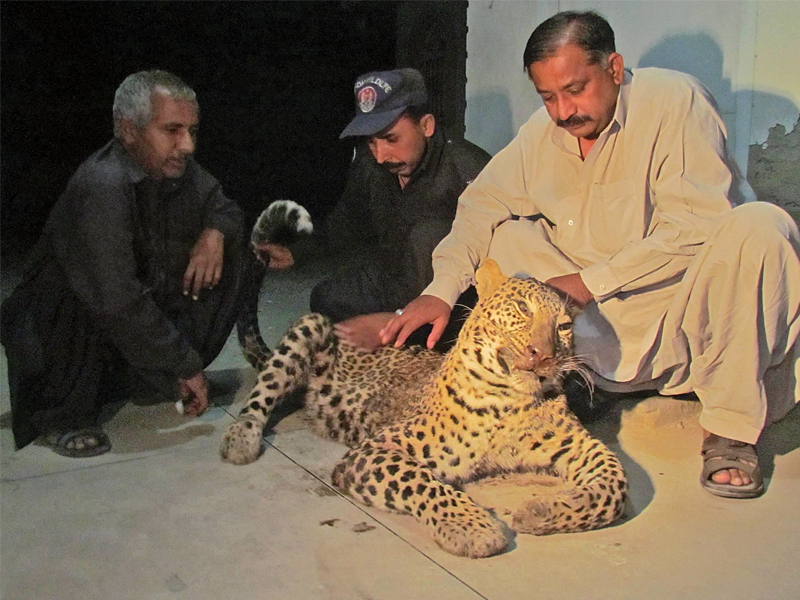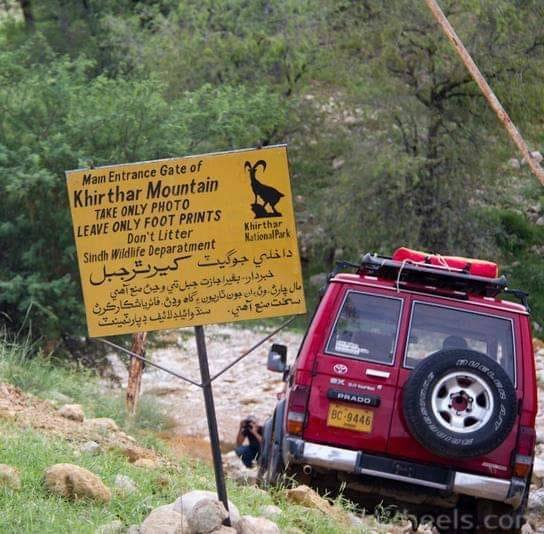
The lion was killed near Kot Diji while a leopard was shot dead near Mando Dero in 1920, another in Khirthar Mountain Range in 1977 and third one in a village near Shah Bello in 2013.
Sindh Courier
The last lion of Sindh was killed in 1842 while a Leopard was killed by the Britishers in 1920 in Mando Dero area of Sukkur district. Another leopards was hunted in 1977 in Khirthar Mountain Range while third one was gunned down in a village near Shah Bello in Sukkur district.
As it appears from the year of killing of a lion i.e. 1842, it was the era of Talpur rulers of Sindh who had turned the forests in hunting areas. Similarly, the forests of Sindh were used as hunting areas during the British Raj, as till that time no policy or rules existed for conservation of wildlife neither the wildlife department was created during that period.

“The last Leopard was killed by a Karachi-based doctor Mr. H. M. Rizvi in 1977 in Khirthar Mountain Range,” an official of Sindh Wildlife Department, told Sindh Courier however according to a newspaper report a leopard was killed by the villagers when the animal entered a village near Shah Bello (Forest) in Sukkur district in December 2013. The villagers gunned down the leopard when it was about to attack the goats in village street.
“The Leopard is now an extinct animal in Sindh, and no any survey has so far been conducted to ascertain any presence of this wild animal in any area of the province”, the official said.
About any possibility of presence of leopards in Khirthar Mountain Range, as the people hailing from the villages located near National Khirthar Park in Karchat area have reported, sources said that the department has no such evidences however the possibility cannot be ruled out.
 Meanwhile, Dr. Irshad Noonari, told sharing experiences during his posting in Thano Ahmed Khan town of Taluka Thano Bulakhan, district Jamshoro a few years back, that the presence of leopards was reported by the villagers in National Khirthar Park of Sindh,”
Meanwhile, Dr. Irshad Noonari, told sharing experiences during his posting in Thano Ahmed Khan town of Taluka Thano Bulakhan, district Jamshoro a few years back, that the presence of leopards was reported by the villagers in National Khirthar Park of Sindh,”
“According to villagers, the leopards sometimes strayed down from mountainous areas at night”, he said.
“Some teachers, who were sent to Karchat area of Khirthar Mountain Range to conduct polling during 1970 general elections, had also witnessed the tigers,” doctor told.
It may be mentioned that National Khirthar Park is a habitat for a variety of animals which include leopards, striped hyenas, wolves, ratels, urials, chinkara gazelles and rare Sind wild goats. However, Blackbuck antelopes are kept in enclosures for a reintroduction project at Kirthar National Park.
A web report says that most of the large predators have been eradicated from the locality. The last leopard was shot in 1977. Khirthar National Park succeeds and maintains its strict criteria of IUCN (The International Union for Conservation of Nature and Natural Resources) and is the largest (308733 hectares) and first of Pakistan’s national parks to be included in the 1975 United Nation’s list of National Parks and Equivalent Reserves.
As regards the lion, a 2016 report of UK’s University of Kent says that last lion of Sindh was killed in 1842 near Kot Diji area.
“Lions survived in the territories of Pakistan up until the mid-1800s, the last of them believed to be killed in 1842 near Kot Diji in Sindh, so its presence there is essentially ancient history,” the report said.
The Kent University report further said, “There have been recent rumors of lions being spotted in a national park of Azad Jammu and Kashmir, with observers suggesting that these are animals migrating from India”.
The Kent University has termed it ‘rumors’, but the tigers, or may be the leopards, were spotted in mountain forests of Khyber Pakhtunkhaw’s area of Bakot and Nathia Gali and some villagers and a journalist residing in Bakot village had confirmed, as some people had become victim of that wild animal.
The report said that there have been incidents of illegal trade in live African lions into Pakistan in the past. There are a number of zoos in Pakistan which have captive Asiatic lions (Panthera leo persica) in their animal collections, although these rare specimens would most likely be kept properly secure, it said.
It may be recalled that the citizens were panicked in August 2020 when they found six lions roaming freely in Gulshan-e-Hadeed area within a compound outside a house.
The owner had kept the lions there illegally in violation of Sindh Wildlife Department rules. Sindh Wildlife Department issues a mini zoo permit for residents if they wish to seek one. However, those provided permits are not allowed to keep flesh-eating animals, as these animals could harm the people.
Lions survived in the Pakistan territories up until the mid-1800s while the lions’ population in India’s Gir National Park of Gujarat has increased to around 700.
Meanwhile a report suggests that the population of lions in Gir National Park of Gujarat, India has steadily increased. In May 2015, the 14th Asiatic Lion Census was conducted over an area of about 20,000 km and the lion population was estimated at 523 individuals, comprising 109 adult males, 201 adult females and 213 cubs. In August 2017, surveyors counted 650 wild lions. In June 2020, an estimation exercise counted 674 Asiatic lions in the Gir forest region, an increase of 29% over the 2015 census figure.
Report says that the Asiatic lions were present in Sindh, Bahawalpur and Punjab in early 19th century.
________________